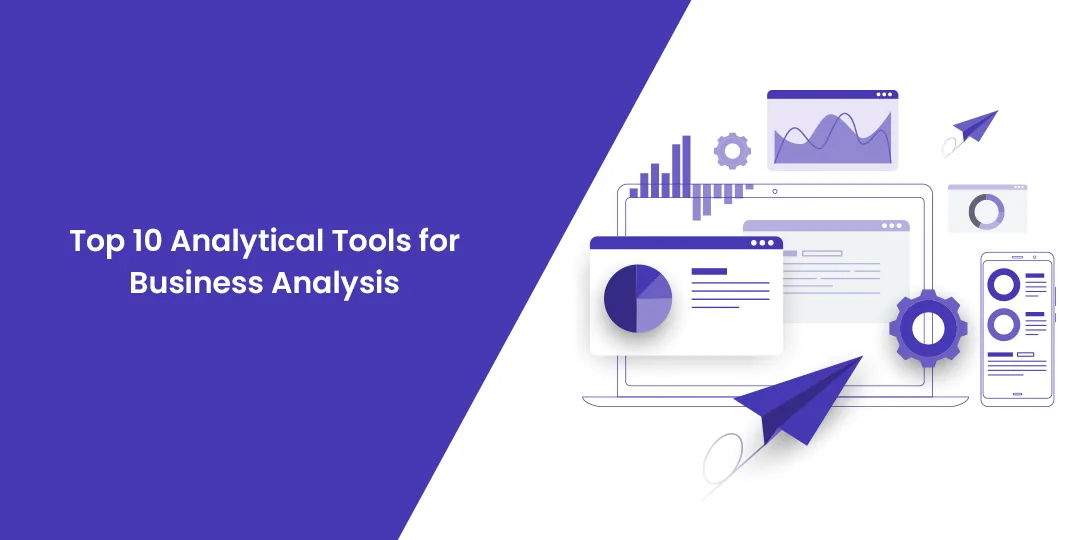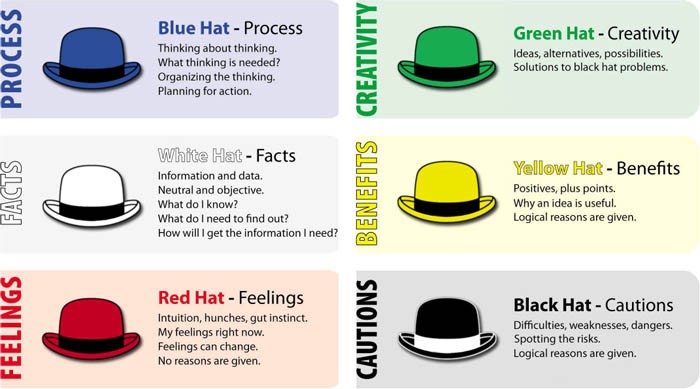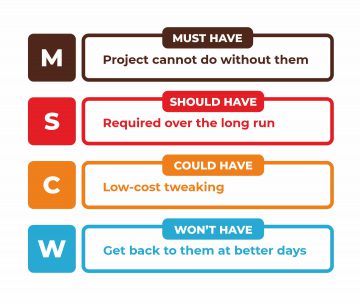eCommerce is a highly competitive market out there. Businesses that want to stand out from the market and find success in e-commerce development solutions need to try out new tools and methods. In this blog, we will discuss one such method, Business Analysis, which is proven to be very beneficial for businesses in the e-commerce industry.
Embark into the world of Business Analysis. Adequate and reliable information helps in decision-making for a successful business. Let us learn more about business analysis and the best business analytical tools.
What is Business Analysis?
Business analysis is to identify the business needs, gather data, recommend changes and provide solutions that adhere to the growing demands. It also includes organizational level changes, improvement in processes, evolving new business policies, and incorporates strategic business planning.
Business analysis techniques help improve decision-making and reduce future problems and risks. Data helps to refine the business procedures and improve efficiency. Business data analytics and business analysis training helps to improve decision-making 5 times faster for businesses.
Quick Overview of Top 10 Business Analytical Tools
| Business Analytical Tool | Type of Activity |
| SWOT Analysis | Strengths, Weaknesses, Opportunities, Threats |
| PEST Analysis | Political, Economic, Sociological, Technological |
| MOST Analysis | Mission, Objectives, Strategies, Tactics |
| Microsoft Power BI | Visualizations, interactive reports, and dashboards |
| Heptalysis | Market Opportunity, Product or Solution, Execution Plan, Financial Engine, Human Capital, Potential Return, Margin of Safety |
| De Bono’s Six Thinking Hats | Pure and logical facts, Creativity, Positivity, Negativity, Emotional, Control |
| CATWOE | Customers, Actors, Transformation, World View, Owner, Environmental Constraints |
| MoSCoW | Must Have, Should Have, Could Have, Would Have |
| SCRS Analysis | Strategy, Current state, Requirements, Solution |
| VPEC-T Analysis | Values, Policies, Events, Content, Trust |
10 Business Analytical Tools
Now that you have an idea about business environment analysis and a brief overview of the business analysis methods. Let’s jump into the top 10 business strategy tools in detail.
SWOT Analysis
SWOT Analysis means examining the Strengths, Weaknesses, Opportunities, and Threats of your business. SWOT analysis is the internal and external analysis of the business environment. SWOT Analysis is performed at the primary stage when there is a new launch of business marketing or strategic plan.
Strengths in SWOT analysis and Weaknesses in SWOT analysis are analyzed based on the internal elements of the business while Opportunities in SWOT analysis and Threats in SWOT analysis are analyzed based on the external elements of the business.

Image Source: Nexight Group
Strengths in SWOT Analysis
It is the step in identifying what area the company is good at. Find out the advantages of your company at this stage of SWOT Analysis.
Weaknesses in SWOT Analysis
At this step of SWOT Analysis, you need to identify the disadvantages of your business. Figure out what areas your company performs weakly and the areas that need to be improved.
Opportunities in SWOT Analysis
Opportunities in SWOT Analysis refer to the strong points of your company compared to your competitors. Opportunities in SWOT Analysis is the stage to identify the weakness of competitors.
Threats in SWOT Analysis
Threats in SWOT Analysis are the opposite of Opportunities in SWOT Analysis. Pinpoint the obstacles that your company is facing. Threats in SWOT Analysis is often the stage where your competitors’ performance is better than your business.
PEST Analysis
PEST Analysis is the abbreviation for Political, Economic, Sociological, and Technological Analysis. PEST Analysis is usually used to identify the external factors affecting the business. Business analysts analyze the various outside influences that directly or indirectly affect business performance.
Image Source: venturefounders
Political factors in PEST Analysis
Study the political situation at this point in PEST Analysis. It is the analysis of current and forecasted future situations that may affect the progress of the business.
Economic factors in PEST Analysis
The Economic factors in PEST Analysis include the impact of the national and global economy on the business.
Sociological factors in PEST Analysis
At this stage of PEST Analysis, business analysts determine the impact of society on business. Customer demands and popular trends are the main points of analysis here.
Technological factors in PEST Analysis
This factor in PEST Analysis focuses on discussing the impact of technology on business. Take a survey of upcoming technologies and how they can affect the business.
MOST Analysis
The MOST Analysis includes the evaluation of the internal business environment analysis. MOST stands for Mission, Objectives, Strategies, and Tactics. Conducting MOST Analysis ensures that the company is going on the right path.
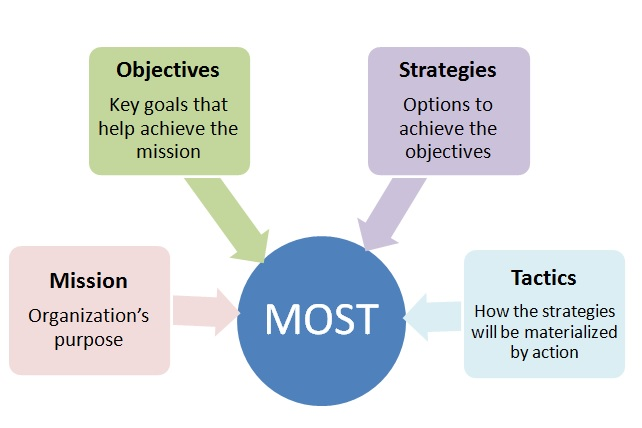 Image Source: salesforcecitizendeveloper
Image Source: salesforcecitizendeveloper
Mission
Define where your business expects to reach.
Objectives
Define the goals that will help to achieve your company’s mission.
Strategies
Business strategy tools that help your business to proceed further.
Tactics
Determine how to perform the defined strategic plan.
Microsoft Power BI
Microsoft Power BI is one of the most popular business analysis techniques. It allows the users to create better visualizations, interactive reports, and dashboards. Power BI is an interactive data visualization tool that focuses primarily on business intelligence. For individuals or teams aiming to understand the basics and advance their mastery in data analysis, exploring data analysis for beginners courses can be a transformative step towards effectively analyzing business data and making informed decisions. These courses provide foundational knowledge crucial for utilizing popular analytical tools, emphasizing practical skills through interactive learning.
Power BI is used in finding insights into the organization’s data. It is being widely adopted and so courses teaching how to use it are widely available. If you want to teach yourself YouTube is the best place to start. If you would like to attend a class there are lots of local providers like Acuity Training in London.
Heptalysis
Heptalysis Analysis is done at the early stage of starting a business. It includes a detailed analysis of 7 fundamental factors:
- Market Opportunity
- Product or Solution
- Execution Plan
- Financial Engine
- Human Capital
- Potential Return
- Margin of Safety
De Bono’s Six Thinking Hats
This business analysis method is used when you are on the hunt for some new ideas for your business. At the time of brainstorming, you can use De Bono’s Six Thinking Hats ba tools and techniques. This method helps to generate and analyze various ideas and options.
To conduct De Bono’s Six Thinking Hats analysis you must think about 6 moods based on hat colors:
- Blue Hat – Control your thinking and come to conclusions
- White Hat – Gather information that you are missing
- Red Hat – Emotional thinking to express feelings
- Green Hat – Creative thinking to get a range of ideas
- Yellow Hat – Look at issues in a positive way
- Black Hat – Be cautious about the risks
CATWOE
CATWOE strategic analysis tools help in quick thinking within a limited time. CATWOE is the short form for Customers, Actors, Transformation, World View, Owner, Environmental Constraints.
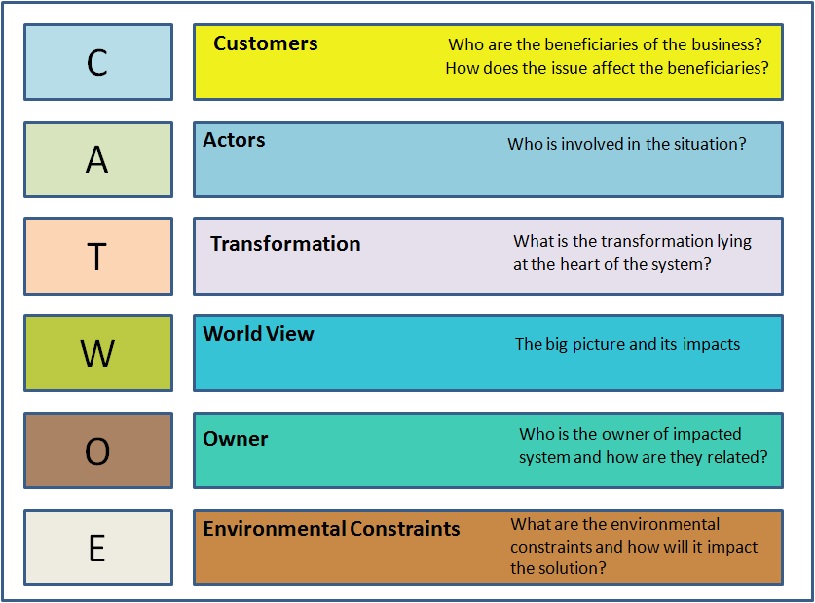 Image Source: joomla.roedel.fr
Image Source: joomla.roedel.fr
The 6 vital elements of CATWOE business analysis methods are:
Customers
Identify the recipients of your business and the issues that will affect them.
Actors
Actors are part of the implementation process. Identify what factors affect the actor’s achievement.
Transformation process
Identify the process that is affected by the issue.
World view
Consider the wider effects of the issue. This means you need to think about the overall picture.
Owner
It is about the person involved in the process and his role in the solution process.
Environmental constraints
Think about the constraints and how they will affect the process.
MoSCoW
MoSCoW business analytical method focuses on setting the priority of the task. When the business has numerous tasks and is in a need to figure out which task has more priority at present.
MoSCoW involves the following 4 elements:
Must Have
These are unavoided tasks without which you are unable to complete the process.
Should Have
These tasks are not essential but add significant value.
Could Have
Performing these tasks will help in better delivery.
Would Have
Tasks that are not necessary at present.
SCRS Analysis
SCRS is another useful market analysis tool. It provides feasible business solutions in terms of the mission and goals. SCRS helps in solving business problems. SCRS is the acronym for Strategy, Current state, Requirements, Solution, which are also important elements for this type of business analysis method.
VPEC-T Analysis
Take opinions from different views of the system and analyze the expectations of several areas under the VPEC-T strategic business analysis. It includes Values, Policies, Events, Content, and Trust.
Wrapping up
Hence, this was all about the business analytical tools. PEST and SWOT Analysis are the most popular ones for businesses. There are several other business analysis methods available that you can use depending on your business requirements. Strategic business analysis can be done by focusing on the business needs, current situation, and so on.
Happy Reading!


